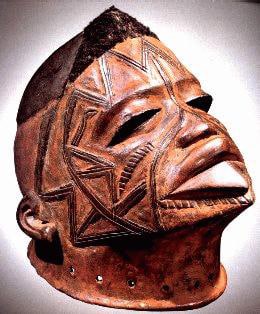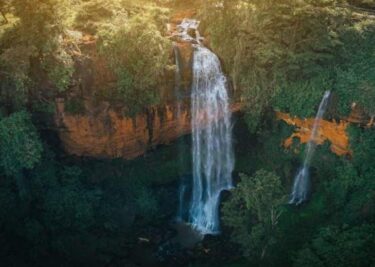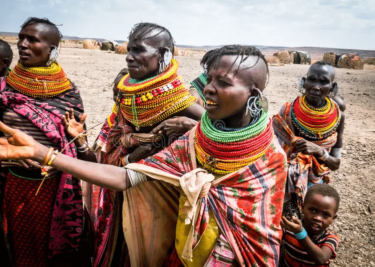The Makonde Creation Myth and Its Artistic Echoes

Image credit: African Blackwood Conservation Project
Art and religion share a profound and intertwined history that has been woven through the fabrics of societies for centuries. Across diverse cultures, these two realms often converge, influencing and shaping the identities of communities. Among the Makonde community, this intricate relationship finds expression not only in their acclaimed wood carvings but also in the very essence of their creation myth, where art and religion coalesce in the genesis of their cultural identity.
From River Ruvuma to Kenya
The Makonde are a Bantu speaking people hailing from both sides of River Ruvuma River, which marks the border between Tanzania and Mozambique. In the 1940s, a small group of this community migrated to Kenya and settled in the coastal towns of Kwale, Kilifi, and Taita Taveta.
The Makonde are renowned for their exceptional wood carvings, a craft deeply that speaks to their cultural identity as well as their spirituality. Artisans of this community are renowned for their craftsmanship and have gained international acclaim for wood carvings characterised by unparalleled realism, life-like qualities, and finely honed details. According to the beliefs of the community, this artistic tradition has roots extending back to the very creation of humanity. Their creation myth unfolds along the banks of River Ruvuma, where the first Makonde being existed in a state of solitude. Because this being was unwashed, he was not fully human, as Makonde culture dictates.
The Genesis, The Baptism & The Journey
With time, this being began experiencing profound loneliness. In an attempt to alleviate this feeling, the first Makonde crafted the likeness of a partner from a piece of wood. Miraculously, the carved figure came to life, transforming into a beautiful woman and becoming the first companion of the lonely being. In their newfound companionship, the couple undertook a significant ritual. Together, they washed for the first time in the waters of River Ruvuma. This symbolic act not only cleansed them physically but also marked their spiritual transformation, solidifying their status as fully human. The river, a witness to this transformative moment, became an integral part of the Makonde identity. The name “Makonde,” derived from the word “Kondeni,” meaning wetlands beside the river, reflects this community’s connection to the riverbank where their mythical journey began.
Soon enough, the Makonde woman conceived a child. Unfortunately, their joy was marred by the tragic death of their firstborn, who survived only three days. Undeterred, the woman suggested that they move to higher ground, where reeds grow. Following her advice, they relocated, and she conceived once more. However, the second child, too, lived for only three days.
Undaunted by adversity, the woman proposed yet another move, this time to a place where thick bushes grow. Resilient in their pursuit of creation, they embraced the suggestion. Finally, in this elevated sanctuary, the woman conceived again, and this time, the child not only survived but thrived. This child, and the descendants that followed, became the first ancestor of the Makonde community.
Symbolism of the Trials of Creation
The Makonde creation story is not merely a historical account but a timeless parable. The painstaking act of carving a companion from wood, the transformative baptism in River Ruvuma, and the relentless pursuit of higher ground in the face of adversity all speak to the challenges inherent in the artistic process. This parable emphasizes that, much like the first Makonde, true artists must navigate solitude, overcome obstacles, and persevere through trial and error before achieving their creative zenith.
The Makonde creation myth thus becomes more than a story of origin; it becomes a testament to the enduring connection between art and the human spirit. It invites us to contemplate the significance of the artistic journey, acknowledging that every stroke, every carve, and every creation mirrors the agonies and triumphs embedded in the cycle of creation.
#CreationMyths
#MakondeCreationMyth

Image sourced from book, “Sanamu. Adventures in search of African Art” by Robert Dick-Read. Pictured is Gogo, a Makonde man in Mozambique, circa 1950, with his sculptures



